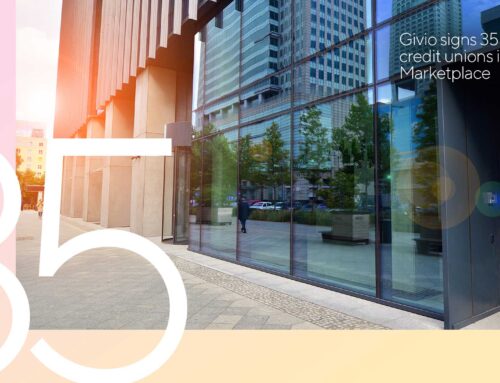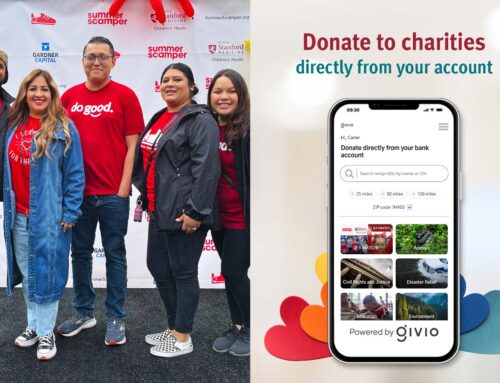When COVID-19 hit, nonprofits got hit hard. Revenue from donations was disrupted while demands for services spiked. As an industry, we can’t defeat the virus anymore than we can rebuild the economy. But we can begin charting our path to charitable giving recovery, and that path begins with donor engagement. More specifically, we must meet the donors “where they are.” And that begs a very important question: Where are the donors?
Below the surface, a crisis looms
COVID-19, however, did more than disrupt charitable giving at a point in time. It also exposed structural problems in the giving industry that have had us treading water for years. In particular:
- We have experienced a net loss of millions of donors since 2000;
- The adoption of digital fundraising lags woefully behind consumer spending patterns.
Now we find our industry in a crisis amidst significant social and economic change. We still depend way too much on direct mail and special events to generate revenue. In fact, one well-respected industry periodical just recently told us that “direct mail is still the biggest donation-driver in the nonprofit space, and nothing points to that changing in the future.” Really? Nothing points to change?
On the contrary, we have to change. And 2020 is telling us that now is the time. For starters, in a post-COVID world, there will be less snail mail, far fewer checks written, and fewer in-person fundraisers with lower attendance. Oh, and don’t forget the demographic shift that our industry hasn’t figured out – younger people increasingly do not have checking accounts and don’t go to a mailbox to find out what is going on in the world.
Perhaps better put, in every other industry you can think of, if your market was bleeding customers by the millions, you’d be in a panic. But apparently not in the fundraising industry. We use terms like “efficiency” and “ROI” to justify raising more and more money from fewer and fewer donors, and we simply ignore the cliff that is fast approaching. In every other industry, technology is deployed to help find new customers, solidify relationships, create stickiness.
Yet in the past 20 or so years, our industry has done a pretty poor job of adopting and using technology. Sure, we have automated a lot of processes, embedded fun videos, created sharing capabilities, and data-mined the crap out of people. But donors are not excited about the current state of giving technology. How do we know? A net loss of millions of donors tells us so.
So we are facing a crisis, and we need to chart a path to charitable giving recovery. Current technology isn’t getting it done. Where do we go from here?
Where are we going?
We cannot chart a path without knowing where we want to go. If we agree that we want to go where the donors “are,” then where is that, exactly?
Donors are everywhere, you might respond. At work. On boards. Volunteering. Participating in community organizations. Going to worship services. Shopping. Chatting over social media. And we create fundraising campaigns to reach them in every one of those contexts and locations … like running a workplace giving campaign, rounding up a purchase at the grocery store, posting a Facebook fundraiser, tithing, or (ugh) sending out direct mail.
And none of that is really working as we had hoped. We have got to look farther than physical location or occupation.
A number of years ago, I received some very good advice that – it turns out – applies in so many facets of our lives. I was chatting with a clergyman about a friend of mine who was struggling with a chronic problem. I wanted to help, but I did not know how to “reach” my friend. The clergyman told me to “stop reaching”. He said “Gary, you have to meet your friend where he is, because you’ll never meet him where you are.” That advice sounds obvious now, but hearing that at the time was like the sun shining through a cloudy November day. I had to change my way of thinking, I had to set aside what I wanted for my friend, in order to better understand his immediate needs and wants, and work from there.
Back to our charitable giving discussion about donors. We need to find more customers, more donors. And we won’t find them if we keep trying to force them to engage on OUR preferred terms even if we are in THEIR location. Make sense?
So I’ll say it again. Attracting more donors begins with meeting donors – as my advisor would put it – “where they are.” What do donors want? Need? Expect?
What occupies their time? How do they communicate? How can we make it so easy to give that donors really can give when the moment strikes?
New question: What do donors expect?
Let’s reframe the question, from one of location or occupation to one of need and expectation.
For starters, donors give to more than one charity. Baby boomers give to an average of 5, the greatest generation, 6 or more. Studies estimate that the typical donor in the U.S. gives roughly $2,000 to anywhere from 5 to 10 organizations. (By the way, Givio user stats are in line with those national trends.) So think about that from the perspective of 95% of all of the enterprise fundraising software ever designed for nonprofits. Where are the donors? They are visiting – i.e., giving to – many causes. They are in a marketplace. Where is the nonprofit? Standing inside its own door.
When a nonprofit meets a donor, what does that engagement look like? Does the nonprofit engage with the donor on the donor’s terms, or on its own terms? Too often, the answer is the latter. Does the nonprofit make the ask via direct mail or email? Does the donor even pay attention to either? When making the decision to give online, is the donor offered recognizable payment methods that might include PayPal, Venmo, or in-app payments? Or is the only digital option a credit card – and does the donor even carry a credit card? Is the donor required to fill out forms, create passwords and join websites? Or can the donor “just give” to start the relationship?
For one more example, let’s consider workplace giving. Yes, workers are at work with access to email. But where are they, really? Odds are that your employees connected via a tech platform like Slack or Teams. When you need to reach them with something important, do you send an email or hit up a Slack channel? Does your workplace giving campaign reach across these same channels?
All of these questions are just different ways of asking the most important question:
Are you (the fundraiser) where the donor is?
If the answer is ‘no’, then now is a good time to chart a path forward.
Charting a new path forward
Building relationships – especially new ones, and with younger donors – begins by meeting the donors on their terms. Where they are. In accordance with their expectations.
Technology must be part of the path forward, so meet the donors in the context of the technology that they use and understand. Build trust by offering them payment options that they use for every other purchase they make during a busy day. Create campaigns that can be shared across any social platform. Even better, be bold and put tools in the hands of donors that help them support all of the causes they care about, not just one. Don’t expect donors to login to 8 different websites, filling out 8 different forms, creating 8 different accounts, with 8 passwords, in order to give to 8 different charities using your payment method of choice, not theirs. If you are one of the 8 thinking “I just care about my charity”, then you might be part of the problem creating donor fatigue and – worse – donor flight.
In other words, the interests of donors must come first.
By the way, recognize that 15% to 20% of your donors will likely help you raise money. But they need super simple tools to reach friends, peers and colleagues with minimal effort across a wide array of communication platforms. How great is it when a donor will turn their one gift into 10 … or 100!
Why Givio
Givio is a giving and fundraising software platform designed for the donor. Givio puts 1.5 million charities and schools in a donor’s hands, and makes it super easy to give and to share. And that same Givio account can be used by companies to run workplace giving campaigns, and charities to create virtual, social fundraisers. Givio is in your favorite app store, and it is free to download and use.
We built Givio for givers, for all the reasons found in this post. And we quickly learned that technology that makes givers happy will make nonprofits, companies and everybody else who is part of the charitable giving marketplace happy as well. Every charitable gift begins with story of need, and the donor is one of the heroes of the story.
Your path forward – as a nonprofit fundraiser, as a workplace giving campaign administrator, as a social influencer in support of a cause – begins with meeting the needs of your donors. And those first steps we take should take us “where the donors are.” Connect on the donor’s terms in order to build trust.
From there, we can invite the donor to join us on a fantastic journey where care is delivered, problems are solved, and needs are met.



